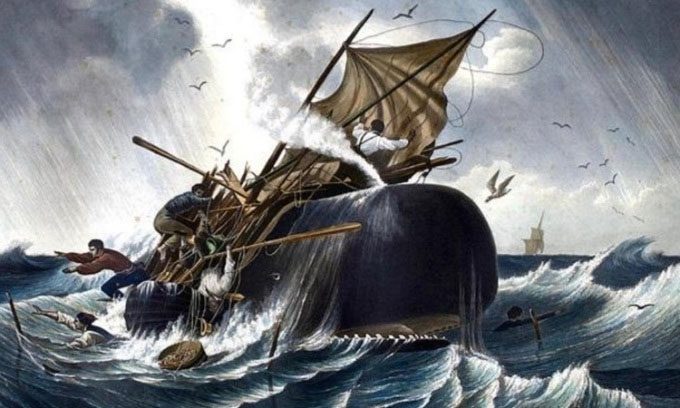A nearly 14-meter-long whale once attacked countless ships entering and leaving Constantinople, the capital of the Eastern Roman Empire.
Under the reign of the Eastern Roman Empire, residents of Constantinople faced many dangers from besieging enemies such as the Avars, Sasanids, Slavs, and Ottomans. However, there was a danger not from humans lurking beneath the waters of the Bosporus, threatening sailors navigating to the city. For about five decades in the 6th century, sailors in the seas around Constantinople lived in fear of a giant whale named Porphyrios, as reported by Greek Reporter.

Simulation of the whale Porphyrios attacking sailors. (Photo: iStock).
Porphyrios was infamous for attacking and even sinking ships around Constantinople. The whale became such a significant threat that Emperor Justinian I prioritized capturing the creature. Information about Porphyrios comes from Procopius, a 6th-century Eastern Roman historian. The whale is mentioned in two of Procopius’s works, “History of the Wars” and “Secret History.”
For approximately 50 years, the whale attacked sailors on the seas around the city. However, sometimes Porphyrios would disappear for long periods, only to reappear and target a hapless ship sailing close to Constantinople. According to Procopius, Porphyrios was willing to attack all types of vessels, from small fishing boats to large merchant ships and warships. Sailors were greatly troubled by reports of these attacks and often took longer routes to avoid the waters where Porphyrios frequently appeared.
According to historians Sian Lewis and Lloyd Llewellyn-Jones, whales were not well understood at the end of antiquity, so it is likely that the residents of Constantinople believed Porphyrios to be a monster. Accurately identifying what species Porphyrios belonged to is challenging. Based on Procopius’s description, Porphyrios was about 13.7 meters long and 4 meters wide.
Some hypotheses suggest that Porphyrios might have been a sperm whale due to its size, longevity, and temperament. Others speculate it could have been an unusually large orca based on its geographical location, as whales are rarely found in the waters Porphyrios frequented. Furthermore, the origin of the whale’s name is also intriguing. A hypothesis by Anthony Kaldellis in 2010 suggested that the name refers to royal purple, symbolizing respect for the whale. On the other hand, in 1996, James Allan Stewart Evans pointed out that the name might refer to the whale’s skin color, possibly a dark purple.
The harassment of ships by Porphyrios became such a serious issue that Emperor Justinian I had to address it, although he was not particularly concerned about how to capture or kill it. Eventually, the problem resolved itself. While chasing a pod of dolphins, Porphyrios became stranded in the Black Sea. It struggled to escape but sank deeper into the thick mud.
When news of the beached whale spread, local residents rushed to the scene with axes to kill it. After several strikes on Porphyrios, they were unsuccessful as the axes could hardly penetrate the whale’s thick skin. The Eastern Romans then pulled Porphyrios further away from the water using ropes and carts. Ultimately, a second attempt to dissect the beached whale succeeded. The whale was cut into several pieces for the Eastern Roman citizens to eat or store.



















































